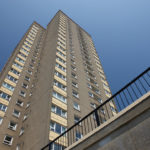 Matthew Warburton, Policy Advisor at the Association of Retained Council Housing (ARCH), discusses Awaab’s Law and the consultation surrounding the new mandatory timescales for social landlords to carry out repairs.
Matthew Warburton, Policy Advisor at the Association of Retained Council Housing (ARCH), discusses Awaab’s Law and the consultation surrounding the new mandatory timescales for social landlords to carry out repairs.
The Government is consulting on new mandatory timescales for repairs — social landlords will be required to respond to residents’ complaints of hazards to health or safety in their homes with fixed periods or face legal action. Powers to set such timescales are provided by clauses in the Social Housing (Regulation) Act known as Awaab’s Law.
Although the initial focus of attention following the tragic death of Awaab Ishak was on damp and mould, the scope of Awaab’s Law has been widened to include any significant risk to the health or safety of a resident in the home. This includes all the risks identified in the current Housing Health and Safety Rating System (HHSRS) and is not restricted to hazards that HHSRS would assess as most serious, or category 1. This is because HHSRS assessment does not take account of the particular vulnerabilities of the residents in the home, only their age. Landlords will be expected to use their judgement to decide whether a hazard poses a significant risk, having regard to HHSRS (an updated version is expected soon) and other guidance.
Responding to complaints
The proposed timescales require landlords to respond to a relevant complaint within 14 days by carrying out an initial investigation to determine whether there is a significant hazard, and to provide a written summary of their findings to the resident within 48 hours after that. If the landlord judges that there is a hazard posing a significant risk, they must begin repairs within seven days.
Repairs must be completed within a ‘reasonable’ period; the consultation paper does not propose to specify a time limit for completion because repairs required are likely to be so variable. If the hazard is judged to pose both a significant and ‘imminent’ threat to health or safety, then emergency repairs to make the home safe must be ‘actioned’ within 24 hours. In circumstances where it is not possible to make the home safe within a reasonable period, the landlord must offer alternative temporary accommodation.
These requirements, if implemented, will take effect as implied clauses in every tenancy agreement, enabling residents to take their landlord to court if they are not complied with. Alternatively, residents can complain to their landlord and follow up by approaching the Housing Ombudsman if they are unsatisfied with their landlord’s response.
The challenges
While it is impossible to argue with the aim to ensure that residents are kept safe, and hazards are tackled as quickly as practicable, the proposals present landlords — and residents — with some difficult challenges. The HHSRS was designed to be used by qualified Environmental Health Officers; staff responding to repair requests are unlikely to be EHO-trained, but will be expected to make, a judgement that has regard to HHSRS and other guidance, and if necessary, defend it in court. It involves taking into account not just the structural condition of the home but also any medical condition that may make a resident more vulnerable to any hazard that is present.
Many areas are already plagued by unscrupulous legal firms who try to persuade tenants to pursue disrepair claims on the promise of financial compensation — most of which, if awarded, will go into the lawyers’ pockets. There is a real danger that the introduction of Awaab’s Law will encourage them to redouble their efforts.
Header image: ©Joe Gough/AdobeStock










